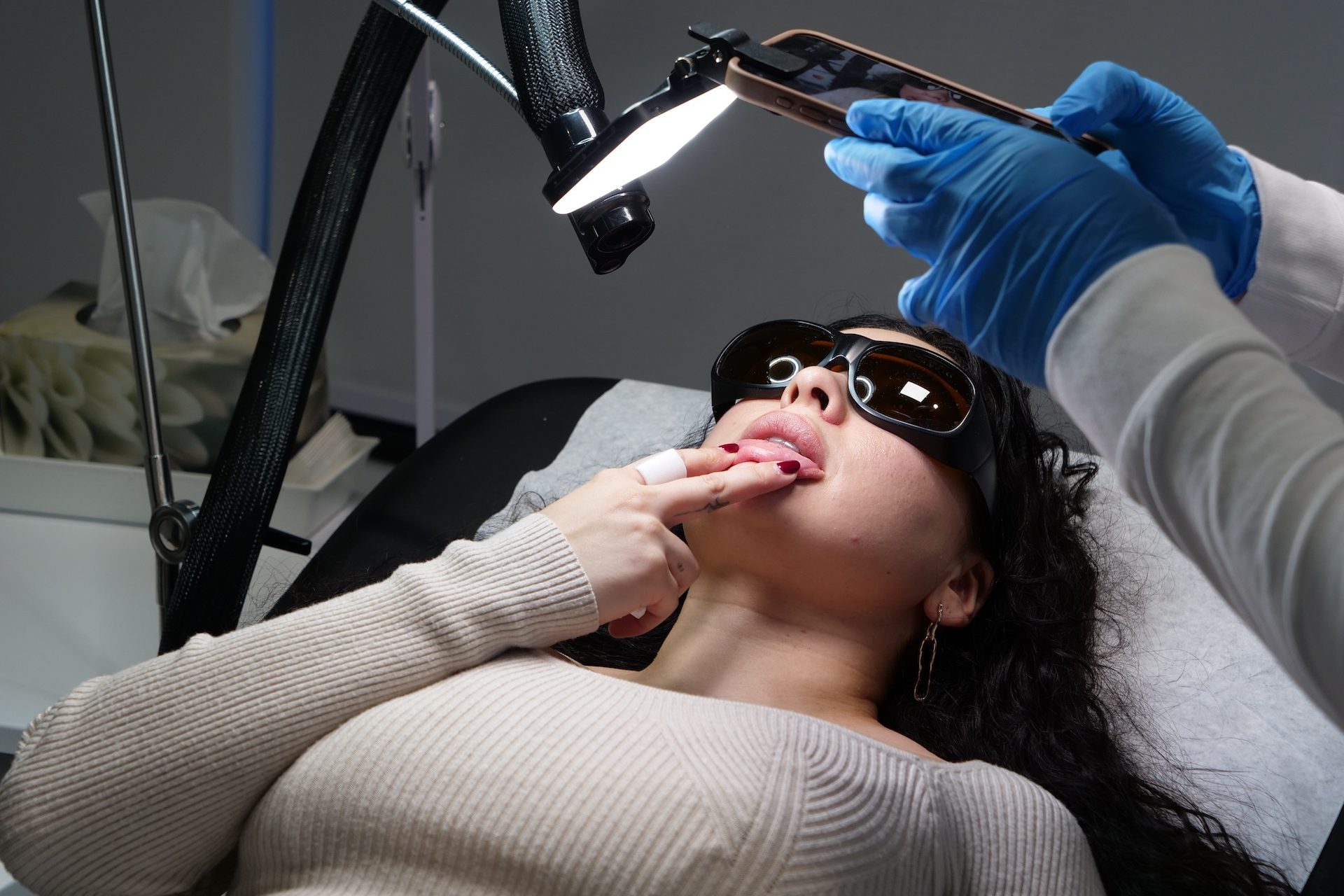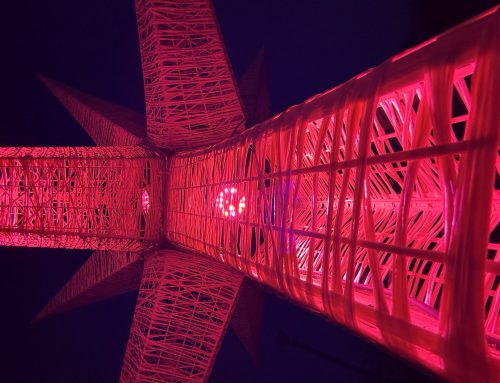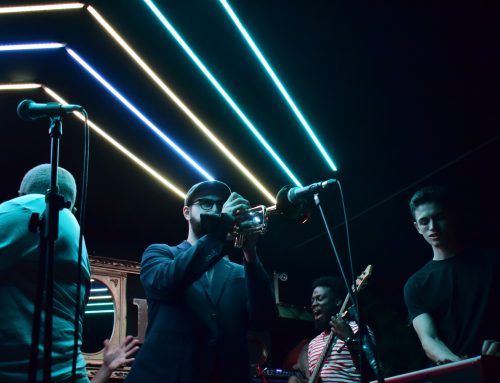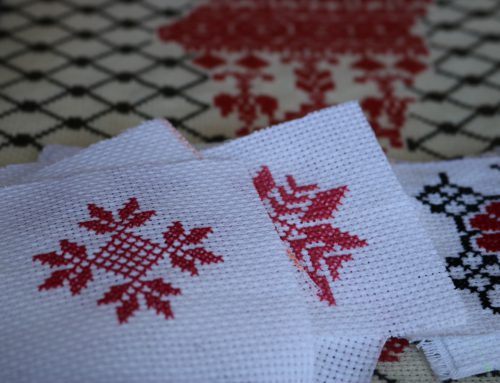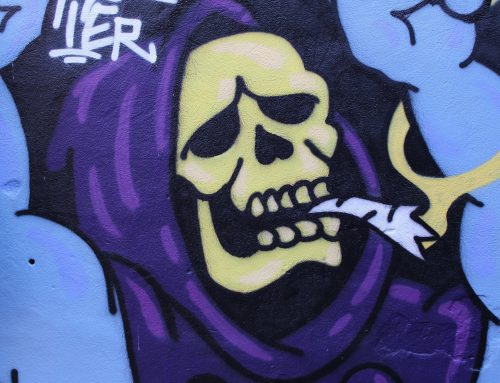Jesse Correll & Sara Comadina
From flowers to a panther, Montrealer Tudor Ionut Ilie is covered head to toe in tattoos.
Now Ilie is considering getting one of his tattoos either removed or covered up.
“When I got into tattoos, let’s say it like that, I had a tattoo artist girlfriend and we made a mystery tattoo night for our anniversary. So I picked hers and she picked mine, we were blindfolded,” says Ilie.
Once Ilie and his girlfriend broke up he began to regret the tattoo she had picked for him. Ilie has lots of experience with tattoos and on occasion with regretting them.
“I have about 20 maybe, and like three are cover ups from other sh-t a long time ago” he says.
According to preply, Canada was ranked fifth of all countries in seeking tattoo removal with 98,520 searches.
There’s no shortage of options for removal in Montreal. Many tattoo parlors and dermatologists have begun offering options for tattoo removal and coverups alongside businesses entirely dedicated to removal procedures like NUYU Tattoo Removal.
“There’s never a lack of clients, that is a certainty, it’s a growing industry, I have customers from Ottawa even across the border from the states,” says Deborah Bisson owner of NUYU Tattoo Removal.
The supply of affordable tattoo removal studios in Montreal drives up demand creating a cycle in which more and more studios open up and continue to bring in new clients according to Bisson.
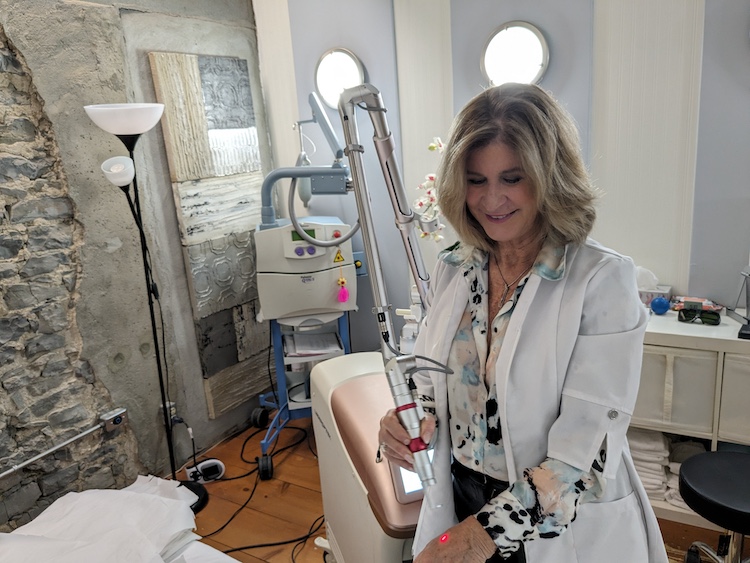
Deborah Bisson shows off the Q-Yag laser. Photo by Jesse Correll.
“The thing with tattoos, this is something I’ve come to see, when you get them put on you think this tattoo is everything you wanted, and it doesn’t take long to realize, life changes so do our likes and dislikes,” says Bisson.
There’s lots of reasons for tattoo regret and removal.
For Nour Torbey, it was a matter of identity.
“It didn’t feel like the tattoo represents or fits me as a person,” she says.
Two years ago, Torbey went to get her tattoo removed.
Since there were less laser removal studios available in Montreal, she went to a studio advertising a different method which gave her unexpected results.
“I didn’t get it removed with a laser. There was actually a studio in Montreal that removed tattoos through a very weird procedure. When she tattooed it on me it went like under my skin,” says Torbey.
Torbey received what’s known as a Tatt2away procedure which is a type of acid peel treatment for her tattoo. The procedure forms a scab bringing the tattoo ink out of the skin, then when the scab heals it’s supposed to remove any marks with it.
For Torbey it didn’t go as planned.
“My tattoo actually didn’t fully come off and I have scars now,” she says.
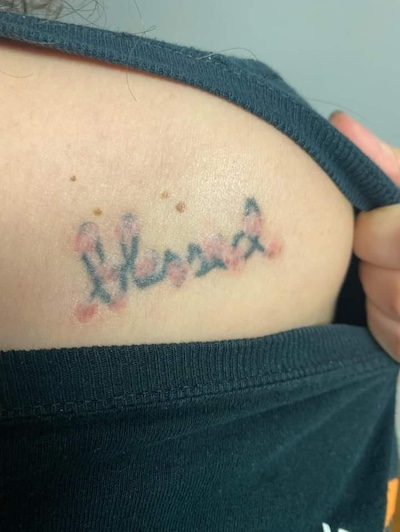
Nour Torbey shows off the scars she was left with after acid peel removal gone wrong . Photo submitted by Nour Torbey.
Experts in the industry warn that nontraditional tattoo removal methods including acid peels put you at greater risk of potential side effects especially when not done by a professional.
The studio Torbey went to is now shut down.
The introduction of more laser tattoo removal studios, such as Bisson’s, minimizes the risk sometimes associated with tattoo removal.
“It is the safest,” says Bisson. “I’ve seen some people try and scrape it off, burn it off, it leaves such horrible marks on your body. I’ve had some young people order little lasers from china and do it themselves but they’re left with nothing but scarring.”
Tattoo removal has only become more accessible and safer over time according to Bisson, the technology of laser tattoo removal has especially improved.
Bisson has both the older and newer model of the Q-YAG laser in her procedure room which she calls the “workhorse of tattoo removal.”
“I have been told the new machine causes less pain and it causes less scarring. I have some clients that started on the old machine and gone to the new one. To take off a tattoo is usually a one to two year process,” she says.
Bissons newer model of the Q YAG laser cost her $100,000. This is still significantly cheaper than the even newer and more advanced Picosecond laser models which speeds up the tattoo removal process.
The Picosecond laser has come to the forefront of the tattoo removal industry. Video by Sara Comadina.
Rather than try another removal method Torbey just ended up deciding to get the tattoo covered up with a different tattoo, something she says “I should have done in the first place.”
Cover up tattoos have grown increasingly common alongside or as an alternative to tattoo removal according to Richard ‘Slick’ Depuis, owner of Slick Styled Steel tattoos.
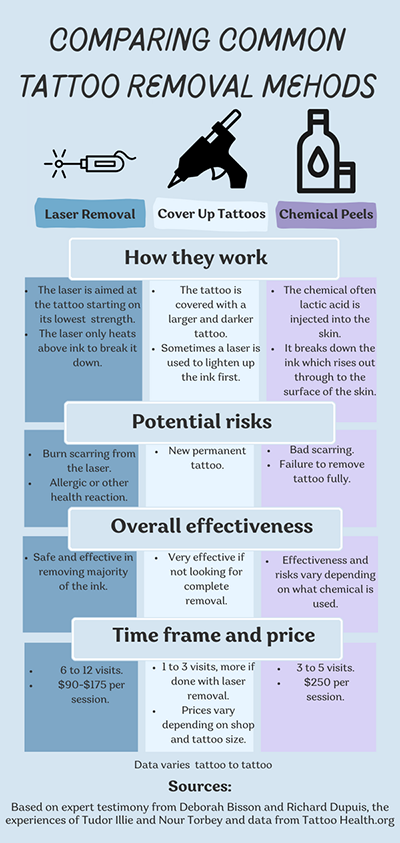
There are various methods for tattoo removal each with their own risks, costs and procedures, these are three of the most popular methods. Media by Jesse Correll.
One might suspect that an increase in tattoo removal would be the result of a decrease in the popularity of tattoos but in reality the opposite is true according to Depuis.
Tattoos reach a bigger and more diverse audience now than ever before and more people getting tattoos also means more people regretting them according to Depuis.
“They are way beyond accepted, when I was in highschool one guy had a tattoo and it was like this big deal, now parents come in with their 15 year old and they wanna give them a half sleeve,” says Depuis.
According to Statista 33 per cent of Canadians had tattoos in 2018. That’s an 11 per cent increase from a 2012 Ipsos Reid poll.
Not only have those getting tattoos become more diverse but so have the artists themselves according to Depuis. “I’ve been in this 25 years , 25 years ago you didn’t have a girl in her early 20s as a good tattoo artist, it was a majority dudes, big dudes older dudes” he says.
Quebec law is especially loose on who can get tattoos “In Quebec, it’s not illegal for a minor to get a body piercing or a tattoo” according to the non-profit Educaloi.
Depuis believes this increase in acceptance and the amount of people with tattoos is ultimately what leads to the increase in people getting removals and coverups.
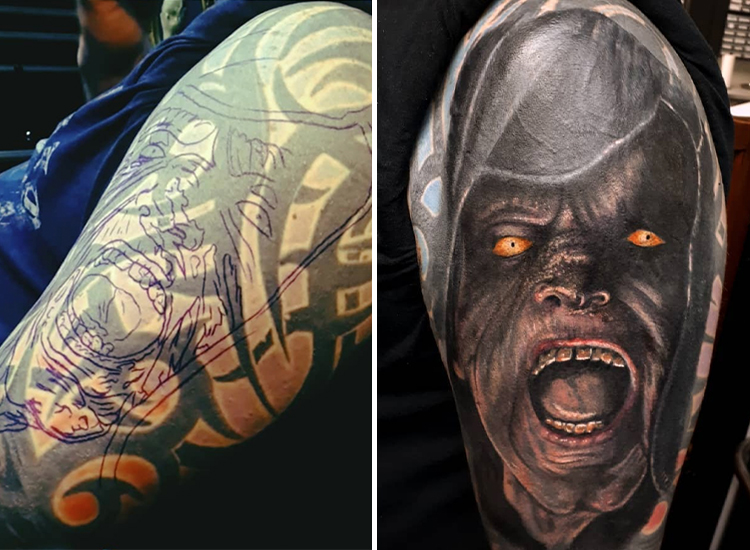
Before and After tattoo cover up done by Suno at Slick Styled Steel. Photos provided by Slick.
“I’ve been doing it almost 30 years, and i’ve been doing cover ups since then, it’s more trendy maybe because people who got tattoos in the 90s can get a better job done now,” says Sylvain ‘Suno’ Huneault one of the Slick Styled Steel tattoo artists.
According to Suno the tools of tattooing have gotten better and the practice more precise overtime.
“In the 90s it was specific customers and now we have people just walking in,” he adds.
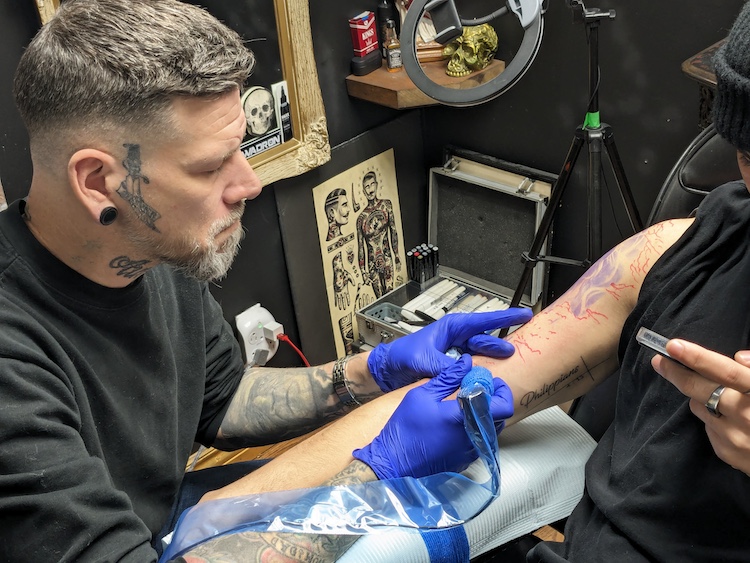
Suno tattoos a Client at Slick Styled Steel. Photo by Jesse Correll.
At the end of the lockdown Dupuis also saw an opportunity in buying his own laser removal machine for one of his tattoo shops.
“Now a lot of tattoo shops have a laser on the premises a few years ago that was unusual,” he says.
Dupuis explains that many tattoo parlors opted to make this investment because of the increased demand of tattoo removals but also the role they can play in making tattoo cover ups easier.
“We’re lucky because black is the easiest color to remove, lighter colors are harder to remove because they dont attract the laser as well but they are also easier to cover” says Dupuis.
Dupuis uses the laser to lighten clients’ tattoos then Suno and other artists working at the parlor cover it up with new ink.
“It’s really rare that you can remove all the ink from the tattoo, even if I am successful and can do that you are often left with residual scarring from the application of the tattoo, my goal is not to remove tattoos which I tell people right off the bat, but my goal is to remove enough ink” says Dupuis.
Bisson is hopeful for the future of the laser removal industry and with no shortage of clients has begun offering free removals to those who were involuntarily tattooed.
For example women with breast cancer, “ I never realized until about a year ago but when they go to get the radiation done, [the doctors] tattoo little blue dots in the area,” says Bisson.
She also plans on going beyond just tattoo removal and begin working on scar-removal which she says the Q-YAG machines have capacity to help.
According to Research and Markets, the Tattoo Removal Market will grow from US$265 million in 2023 to US$534 million by 2030.
Montreal is in a unique position to take advantage of these changes because of its vibrant tattoo culture and its accessibility to an abundance of safe removal parlors, according to Bisson.
“I can see it will always be a growing business, there will be many other places popping up in the city,” she says.
